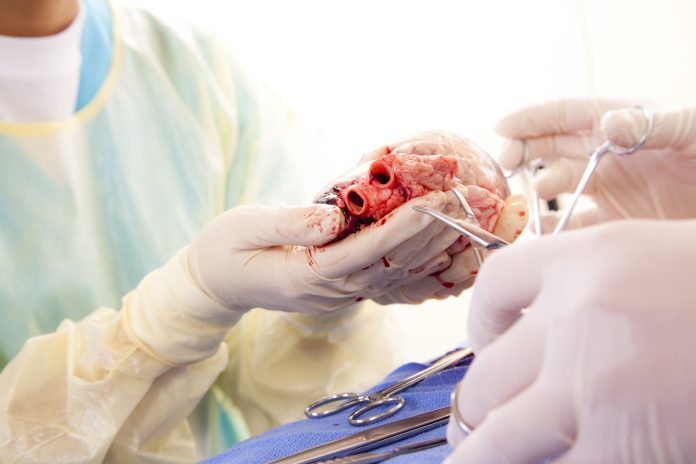
Researchers have created a new scoring system that could create fairer access to organ transplantation.
The continuous, multivariable prediction model was better than existing U.S. criteria at ranking adult heart transplant candidates according to medical urgency.
The current system uses subjective physician decisions and has been criticized as being open to manipulation, however well intentioned, to gain higher priority for some candidates without medical justification.
In an editorial accompanying the JAMA study, Michelle Kittleson, MD, PhD, from Cedars-Sinai Medical Center, said the research findings have “practice-changing implications.”
Transplantation is the preferred option for patients with heart failure yet demand for donor organs far exceeds supply, with more than a third of patients dying while on the waiting list.
Allocating this scarce resource to those who most urgently need it therefore represents a major medical challenge.
The current U.S. adult heart allocation system was developed by the United Network for Organ Sharing (UNOS) under contract to the Organ Procurement and Transplantation Network (OPTN).
It prioritizes medically urgent candidates with a high risk of dying without transplant, based mainly on treatment intensity in a six-status categorical allocation system.
But the researchers say this is susceptible to manipulation from overtreatment, does not use important laboratory measures of illness severity, and limited ability to place patients in rank order.
William Parker, PhD, from the University of Chicago, and co-workers examined whether they could improve on the situation by designing and validating a U.S. Candidate Risk Score (U.S.-CRS).
This is similar to the French-CRS—a continuous score derived from a multivariable model that mainly relies on laboratory markers of illness severity—but additionally has a predefined set of predictors.
The final U.S.-CRS included extracorporeal membrane oxygenation, surgically placed temporary mechanical circulatory support, bilirubin, estimated glomerular filtration rate, B-type natriuretic peptide, albumin, sodium, and durable left-ventricular assist device support.
The researchers tested the three models against one another in a registry-based model of 16,905 adult heart-transplant candidates listed between 2019 and 2022, with a mean age of 53 years. Of these, 4.7% died without a transplant or within six weeks of removal from the waiting list.
The dataset was split by center into 70% training and 30% test datasets.
The U.S.-CRS model had significantly greater sensitivity in predicting waiting list death and specificity for predicting waiting list survival.
In the test dataset, the time-dependent area under the receiver operating characteristic curve (AUC) for death within six weeks of listing was 0.79 for the U.S.-CRS model, 0.72 for the French-CRS model, and 0.68 for the six-status model.
Overall survival concordance was a corresponding 0.76, 0.69, and 0.67. Classifying intra-aortic balloon pump and percutaneous ventricular assist devices as short-term mechanical circulatory support reduced the size of the effect by 54%.
After converting the predicted risk into a 50-point medical urgency score, similar to that used in kidney transplant allocation, more than a quarter of candidates currently categorized as low priority ended up in the top 10% of risk, with a U.S.-CRS above 40.
“The U.S.-CRS is a parsimonious, easy-to-implement model that captures the key clinical predictors of medical urgency,” the researchers summarize. “Machine learning approaches did not outperform the U.S.-CRS.”
Kittleson added: “Ultimately, the focus on objective predictors of waiting list mortality over physician decision-making removes a burden from physicians struggling to reconcile the needs of the individual patient with those of the larger community of transplant candidates in the allocation of donor organs.”













